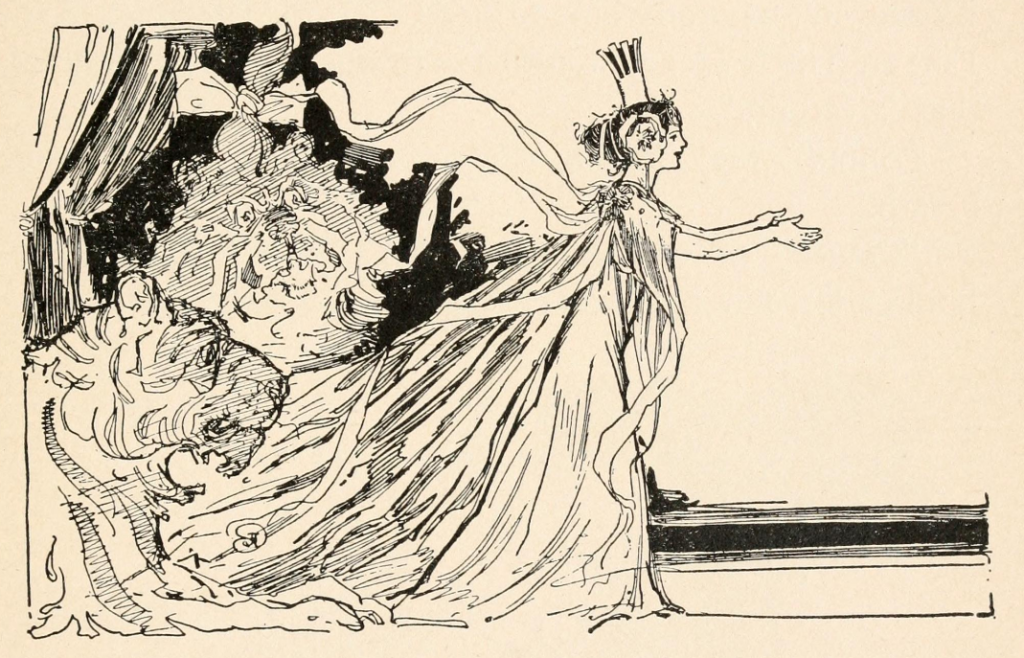
Because Baum originally intended to end the series with The Emerald City of Oz, it serves to an extent as a statement of the series’ values overall. In this novel, the utopian, nonviolent Oz is pitted against the decidedly not-utopian Nome King and the Whimsies, Growleywogs, and Phanfasms, who want to pillage the land and enslave its people. Fittingly, for the first time, Baum describes the Ozite economy in detail. At least, this is the economy of Oz after Ozma and her allies “civilize” the land. The entire passage is relevant:
[The Emerald City] has nine thousand, six hundred and fifty-four buildings, in which lived fifty-seven thousand three hundred and eighteen people, up to the time my story opens.
All the surrounding country, extending to the borders of the desert which enclosed it upon every side, was full of pretty and comfortable farmhouses, in which resided those inhabitants of Oz who preferred country to city life. [Later novels contradict this claim, filling Oz with jungles, dangerous mountains, and other urban centers.]
Altogether there were more than half a million people in the Land of Oz—although some of them, as you will soon learn, were not made of flesh and blood as we are—and every inhabitant of that favored country was happy and prosperous.
No disease of any sort was ever known among the Ozites, and so no one ever died unless he met with an accident that prevented him from living. This happened very seldom, indeed. There were no poor people in the Land of Oz, because there was no such thing as money, and all property of every sort belonged to the Ruler. The people were her children, and she cared for them. Each person was given freely by his neighbors whatever he required for his use, which is as much as any one may reasonably desire. Some tilled the lands and raised great crops of grain, which was divided equally among the entire population, so that all had enough. There were many tailors and dressmakers and shoemakers and the like, who made things that any who desired them might wear. Likewise there were jewelers who made ornaments for the person, which pleased and beautified the people, and these ornaments were free to those who asked for them. Each man and woman, no matter what he or she produced for the good of the community, was supplied by the neighbors with food and clothing and a house and furniture and ornaments and games. If by chance the supply ever ran short, more was taken from the great storehouses of the Ruler, which were afterward filled up again when there was more of any article than the people needed.
Every one worked half the time and played half the time, and the people enjoyed the work as much as they did the play, because it is good to be occupied and to have something to do. There were no cruel overseers set to watch them, and no one to rebuke them or to find fault with them. So each one was proud to do all he could for his friends and neighbors, and was glad when they would accept the things he produced. (29–31)
The Tin Woodman also clarifies some of the economic system in The Road to Oz:
“If we used money to buy things with, instead of love and kindness and the desire to please one another, then we should be no better than the rest of the world,” declared the Tin Woodman. “Fortunately money is not known in the Land of Oz at all. We have no rich, and no poor; for what one wishes the others all try to give him, in order to make him happy, and no one in Oz cares to have more than he can use.” (164)